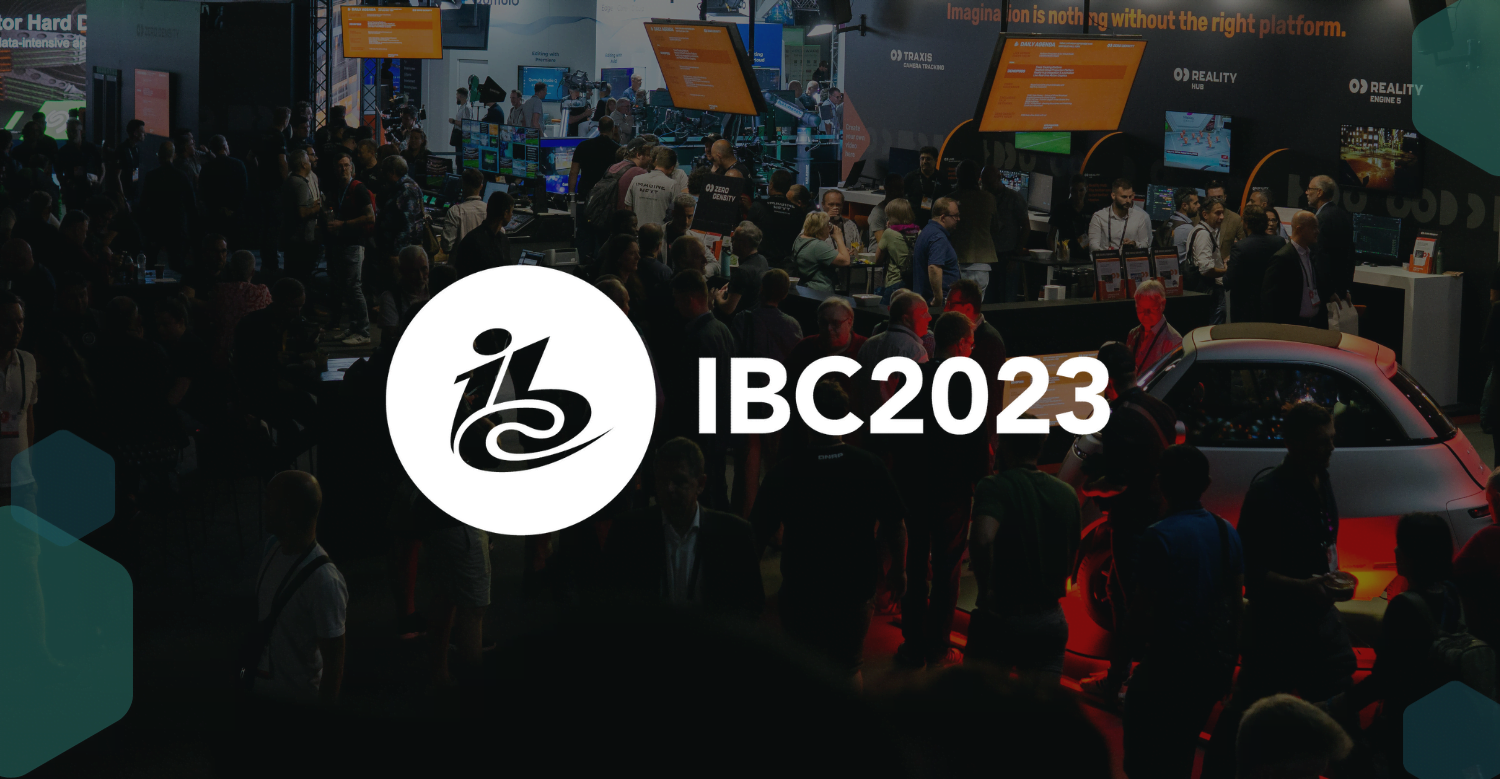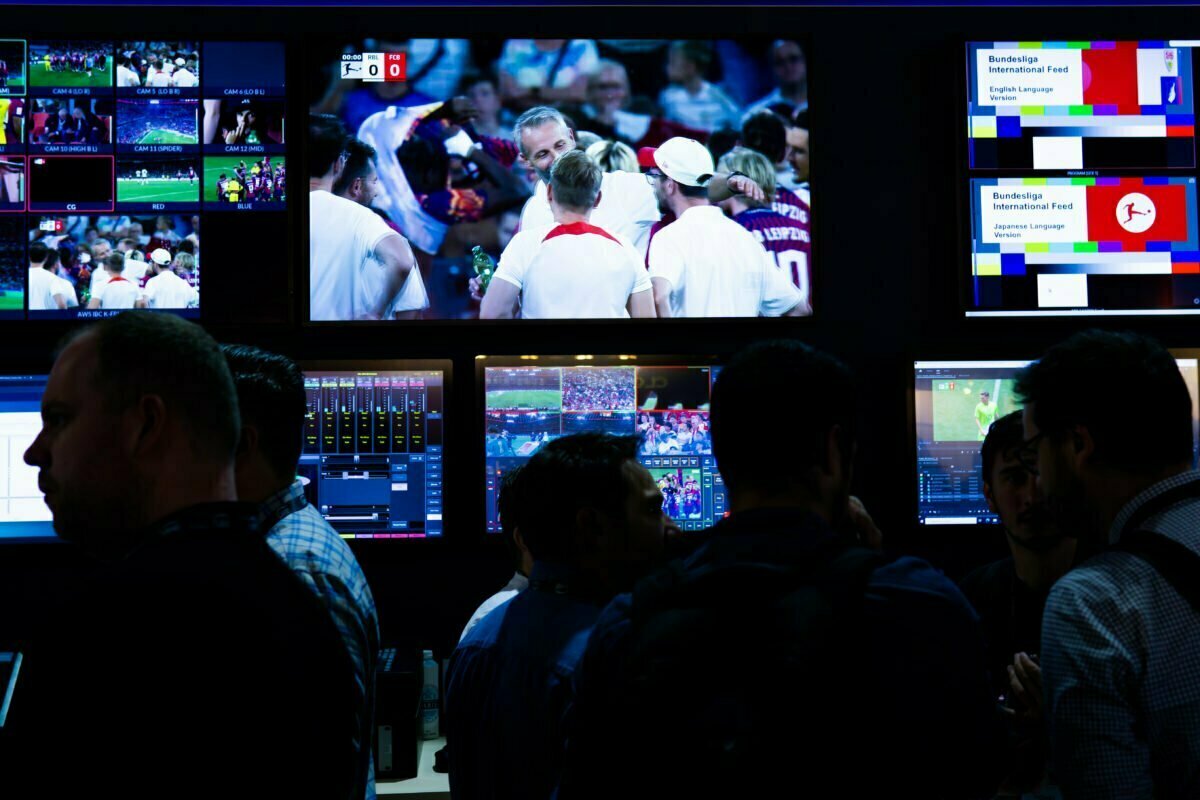
Generative AI, Web3, And FAST – All You Need To Know About IBC2023 As A Broadcaster
The key themes of IBC2023 underscored many essential topics that are shaping the entire media industry. Here, we have highlighted the most important ones for the future of broadcasters.
IBC – the International Broadcasting Convention is an annual event that convenes together the global media, entertainment, and technology industry to explore the very latest developments in broadcasting and media technologies.
At Media Tailor, we have always valued the great opportunities offered by IBC. That’s why, once again, we sent a dynamic dream team to represent Finnish media know-how and explore new possibilities for advancing the Finnish media field.
IBC2023 didn’t disappoint! Now, we want to share the most essential themes discussed at the event. Some of these are already changing the industry, and some are still waiting for their breakthrough.
Generative AI Will Change The Entertainment Industry Forever
AI, AI, and once again, AI. Artificial Intelligence was undeniably one of the main themes of the entire event. Especially generative AI is something that many found to be one of the main elements to shape the future of the industry.
In a nutshell, companies can leverage emerging tools to explore more creative and professional opportunities, all while saving business time and money. Additionally, ensuring content authenticity remains a top priority.
One great example of the new wave of generative AI is Adobe Firefly. This tool can generate almost anything from simple written prompts. Moreover, numerous other new image and audio recognition APIs have surfaced, allowing companies of every scale to develop their own AI tools.
Generative AI’s applications extend beyond creative work; it can also be employed, for instance, to automatically generate metadata. AI is evolving into what some call “Assistial Intelligence,” continually expanding its capabilities to assist us humans in various tasks.

Web3 & Blockchain Transforming Content Distribution
The amount of video content continues to grow. Streaming videos is anything but cheap for broadcasters, and as there’s more and more video content to distribute, it means increased expenses. This is primarily because broadcasters who want to distribute video on the internet need to first transcode it (and that’s quite too expensive!).
The replacement of the traditional distribution chain, namely Content Delivery Networks (CDN), with Web3 and blockchain technology could revolutionize broadcasters’ distribution capabilities in the future.
Futurists claim that Web3 and blockchain technology have the potential to transform content delivery by decentralizing networks, enabling peer-to-peer sharing, and introducing token economies. Blockchain reduces costs, enhances security, enables micropayments, and offers global accessibility, promising cost-effective content delivery solutions.
The data stored on a blockchain can only be accessed by people who have permission to do so. More practically, it is almost impossible to steal digital content as it is very secure and its entire movement is tracked.
The Ongoing On-Premises vs. Cloud vs. Hybrid Debate
There’s still ongoing discussion about on-premises vs. cloud vs. hybrid solutions. In search of cost efficiency, “everything in the cloud” is no longer the only strategy.
While the British broadcaster UKTV has centralized its asset library entirely in the cloud, it’s not the most efficient option for everyone.
While some media organizations are embracing complete cloud migration, it’s evident that a thoughtful blend of on-premise and cloud-based infrastructure will remain the favored choice for many broadcasters.
The primary rationale behind adopting a hybrid cloud approach lies in its agility to achieve business goals promptly while retaining full control over media archives and costs. It offers a low-risk transition to the cloud, aligning operations with evolving business needs. Moreover, it empowers organizations to switch seamlessly between local and remote operations as required.
For vendors and service providers, the task of aiding media companies in implementing hybrid models, often as part of extended cloud migration strategies, will persist. They understand that each organization has unique preferences and timelines for change.
FAST on a Fast Lane
FAST is a very fast breaking OTT service as an alternative to new revenue streams for TV companies and content owners. It has been developed with the consumer in mind, including research into how much time people spend on the difficulty of choosing between different programmes.
Biggest reasons for FAST’s success have been genre diversity and the importance of curating content for particular audiences, and building successful strategic partnerships and the elements that make them productive.
To establish a thriving FAST channel, it is advisable to ensure a content library of approximately 250–300 hours. Additionally, there is a need for periodic content refreshment within a specified timeframe. Therefore, for brands venturing into the FAST market and aiming to create a distinctive channel, they need to be prepared to invest a lot of money.
But the implementation process can also be surprisingly easy and cheap if all the materials are already centralized on the same platform and the rights are in order.

Balancing Social and Environmental Responsibility in the Media Industry
Content creators’ social responsibility was emphasized in several contributions at IBC2023. It was clearly stated that influencers and programme producers need to take into account the socio-economic situation of their audience.
Surprisingly, there were very few mentions of environmental responsibility. It would have been expected to be a bigger theme, as the whole world is still trying to find its way through the climate crisis.
However, many exhibitors emphasized cost-effectiveness of their products and solutions. One aspect of this is the potential for cost and energy savings, for example, in data transfers. This plays one part in media companies’ mission to be more ecological but also economically efficient.
IBC2023 Leading the Way
Once again IBC has driven thought leadership, innovation, best practice and diversity across the global IBC community. It has shown where the media industry stands and where it is heading to.
For us it was an extraordinary four days. The buzz and vibrancy at the fair were so infectious that it left an indelible impression on all of us. It was a reminder that in the ever-evolving world of media and technology, staying still is not an option.
And as the saying goes, a rolling stone gathers no moss. That’s precisely why we wasted no time in diving headfirst into the treasure trove of insights from this remarkable event.
In addition to the details we have shared here, we have a whole bunch of new ideas and insights to develop our own solutions. If you’re interested in connecting with us and hearing more about industry trends, don’t hesitate to contact us!